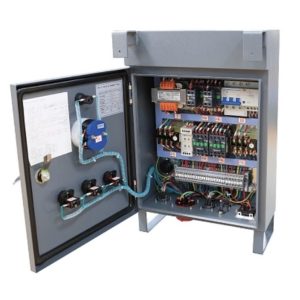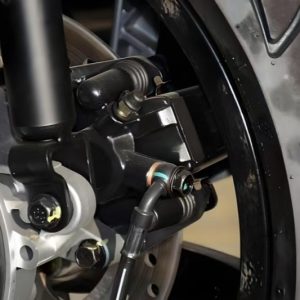
Ladles and iron ladles are key containers for transporting and storing liquid metal (molten steel, molten iron), and are widely used in core processes such as ironmaking, steelmaking, refining and continuous casting. Infrared thermal imaging can monitor the temperature distribution of the ladle's refractory layer, warn of lining wear and local overheating, and assist in ladle life management and safe and efficient operation of the steelmaking process.
HIRDA-L steel ladle intelligent diagnosis and analysis system is a high-tech system specially used to detect the temperature of steel ladle shell and conduct intelligent analysis. The system consists of high-temperature IR thermal camera, high-definition visible light camera, electric control box, algorithm server and client management software. It centrally monitors and manages the equipment on the operation site, and realizes data collection, analysis, high temperature point positioning, automatic alarm and ladle number recognition through digital transmission network.
1. IR video camera with all-weather passive thermal imaging function;
2. Adopt self-developed temperature measurement and correction algorithm to achieve accurate temperature measurement;
3. Strong environmental adaptability, can be used in harsh environments such as high temperature and high dust;
4. Automatic identification of ladle numbers and intelligent association of temperature data;
5. 360° all-round temperature detection of the ladle, 3D schematic diagram showing the temperature distribution of the ladle;
6. 1 square decimeter high temperature area automatic positioning warning;
7. Establish the corresponding model between the refractory material of the ladle and the surface temperature of the ladle;
8. I cam establish a surface temperature database for each ladle life cycle;
9. Open interface, providing SDK development kit, can be connected with DCS, PLC and other systems.

In the world of kiln operation, success depends equally on artistic vision and technical precision. Mastering three key maintenance tools - small infrared cameras, kiln cement, and kiln Portland cement - can elevate your craft while protecting your investment. Let's explore how these solutions work together to create a maintenance sy...

HJKIR infrared solutions with electrical cabinet temperature monitoring system has strong penetration of smoke, and can be used in a wide range of ambient temperature. Offers multiple equipment detection at the same time, saving the detection cost.

Infrared cameras are increasingly valuable in automotive braking systems Infrared devices are also used to assess other components of the braking system